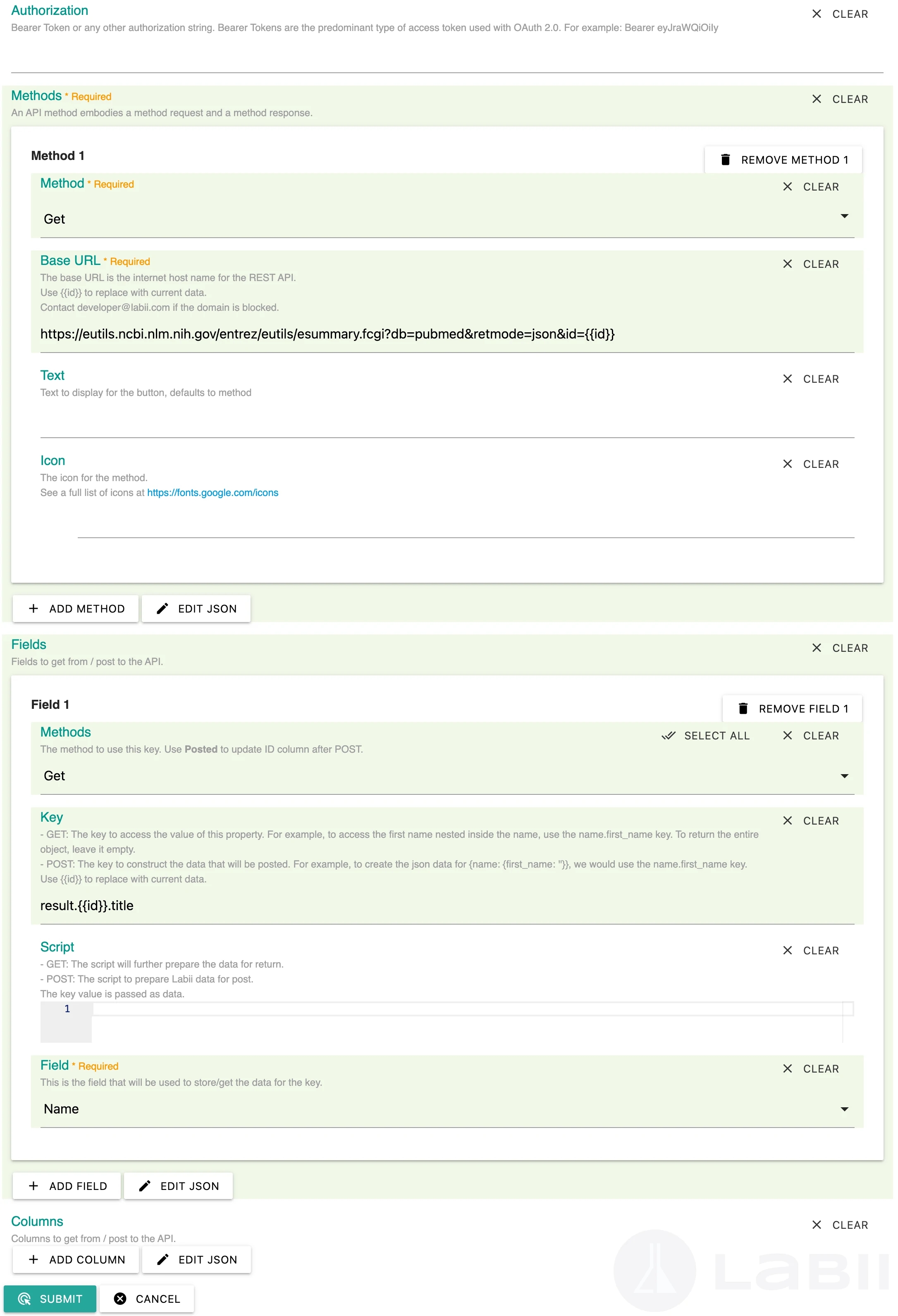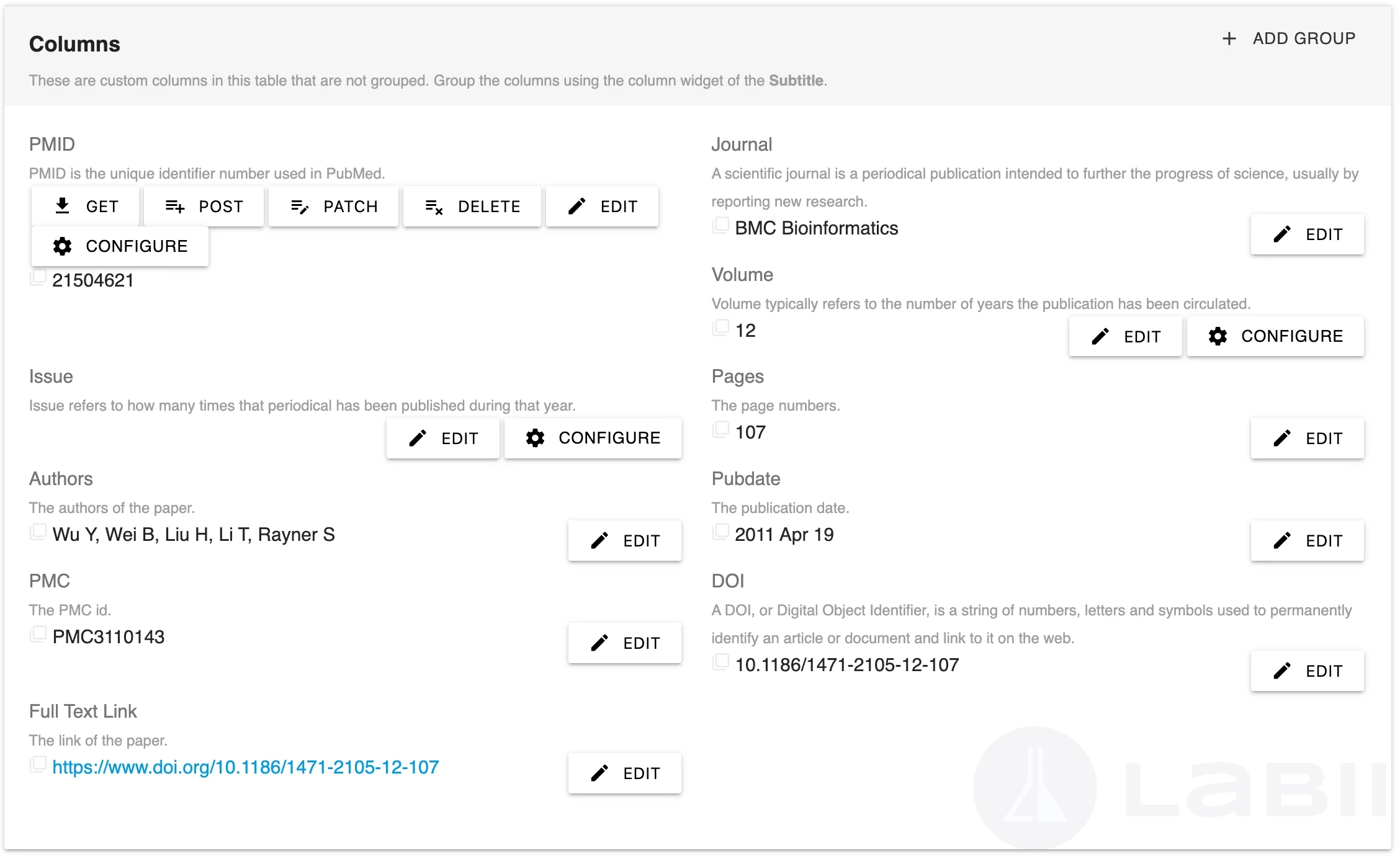2023-02-28 Efficiently Connect External Data Sources with Labii API Widget for Research Management
2023-02-28
What is API?
API stands for "Application Programming Interface". It is a set of protocols, routines, and tools for building software applications. In simple terms, an API defines how different software components should interact with each other.
APIs enable different software platforms to communicate with each other in a standardized way, without requiring developers to understand the underlying code or data structures of each platform. This makes it easier for developers to create new applications that can interact with existing software systems, and also makes it possible for different software systems to exchange data and functionality seamlessly.
There are many reasons why it is important to use APIs for different software platforms to communicate. For example:
Improved interoperability: APIs enable software components from different vendors to interoperate seamlessly, allowing users to mix and match the best-of-breed solutions.
Increased efficiency: APIs enable software components to communicate more efficiently, reducing the amount of data that needs to be transmitted between different systems.
Improved functionality: APIs allow developers to tap into the functionality of other software systems, making it possible to build more complex applications with less effort.
Greater flexibility: APIs allow developers to access data and functionality from other systems in real-time, enabling them to build more dynamic and responsive applications.
APIs play a critical role in enabling the creation of more complex and powerful software systems, by enabling different software platforms to communicate and work together seamlessly.
Labii API and SDK
Labii API and SDK are software tools that enable users to easily connect with other platforms and equipment, such as laboratory instruments and electronic health records systems. These tools are designed to simplify the process of integrating different software systems and equipment, making it easier for users to automate workflows, share data, and improve collaboration.
The Labii SDK (Software Development Kit) is a set of software tools and libraries that enable developers to build custom applications that interact with Labii software systems and equipment. This SDK provides a set of pre-built software components and integration tools that simplify the process of building custom applications that connect with Labii and other systems. With the Labii SDK, developers can create custom applications that automate laboratory workflows, integrate data from multiple sources, and improve collaboration and communication.
API widget
The Labii API widget is a user-friendly tool designed to simplify the process of integrating third-party APIs with Labii databases. Unlike traditional APIs that require coding skills, the Labii API widget can be used by researchers and lab personnel who do not have a coding background.
The Labii API widget is essentially a column widget that allows users to easily populate data into columns from external sources. By using this widget, users can automate the process of accessing data from external sources and populating it into their Labii records. This enables them to quickly and efficiently integrate data from other sources, such as electronic lab notebooks, inventory management systems, and enterprise resource planning into their Labii databases. Researchers and lab personnel who need to access data from multiple sources and integrate it into their workflow will find this tool extremely useful.
How to use API widget
To use API widget,

Add a new column to your Labii database and select the API widget option.
Click the Edit button in the Configuration section to configure the API widget.
Provide the API Base URL, which is the internet host name for the REST API. You can use {{id}} to replace with current data. If the domain is blocked, contact [email protected].
Add the Authorization information, such as a Bearer Token or other authorization string.
Select one or many Methods to call the API, which will be displayed as buttons.
Map a field or column in your Labii database with the API schema.
Choose a method to use this key and provide the key to access the value of this property.
You can provide a script to further prepare the data for return, which is optional.
Select a Field or Column to get from or post to the API.
Once configured, you can sync data with the API by clicking the Get button.
Use API widget to pull PubMed data
PubMed is a vast biomedical literature database, which contains millions of publications from around the world. In order to showcase the usage of Labii API widget, I will be demonstrating how to use the PubMed API to pull paper information into a Labii database.

The Labii API widget can be used to pull paper information from PubMed by following these steps:
Create a new column in your Labii database and select the API widget option.
Click the Edit button in the Configuration section to configure the API widget.
In the API Base URL field, enter the base URL for PubMed's API: https://eutils.ncbi.nlm.nih.gov/entrez/eutils/esummary.fcgi?db=pubmed&id={{id}}
In the Authorization field, leave it empty, since no authorization is required for accessing PubMed's API.
Select the GET method.
Map a field or column in your Labii database with the API schema. You can select the PubMed schema, which includes fields such as title, authors, abstract, and publication date.
Choose a method to use this key and provide the key to access the value of this property. For example, to access the title of a paper, you can use the key: result.{{id}}.title.
You can also provide a script to further prepare the data for return, if needed.
Select the Field or Column to get from the API, such as the title or abstract field.
Once configured, you can sync data with PubMed's API by clicking the Get button.

By using the Labii API widget to pull paper information from PubMed, researchers and lab personnel can easily access and integrate data from this important database into their Labii databases.
Summary
The Labii API widget is a powerful tool that allows researchers and lab personnel to easily integrate third-party APIs with their Labii databases. With the API widget, users can automate the process of populating data into columns, enabling them to quickly and efficiently access data from external sources.
By using the Labii API widget, researchers can easily integrate data from important sources such as PubMed, ensuring that their Labii databases are up-to-date and comprehensive.
If you're interested in testing out the Labii API widget for yourself, you can sign up for a free account on Labii's website at https://www.labii.com/signup. Alternatively, if you have any questions or would like to see a demo of the Labii API widget in action, you can request a demo at https://schedule.labii.com/.
Last updated
Was this helpful?